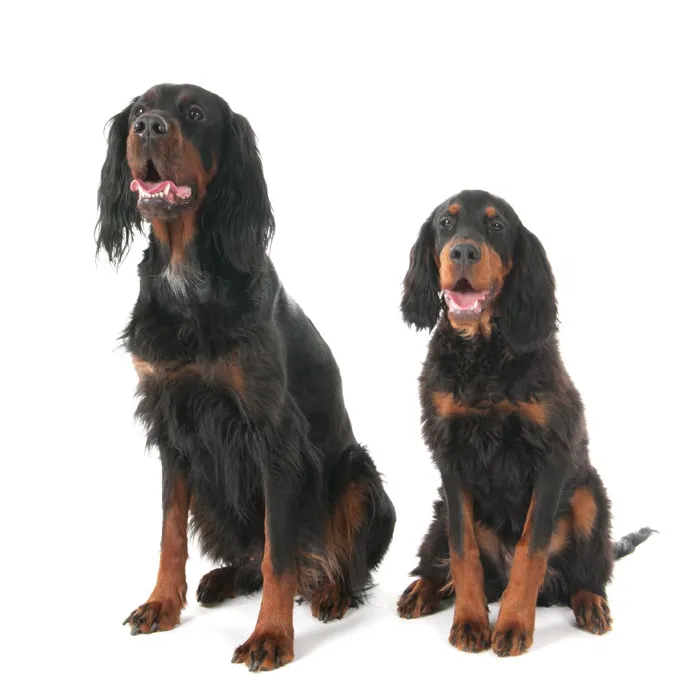Gordon Setter

The Gordon Setter, the black avenger of the Highlands, is a substantial bird dog named for a Scottish aristocrat. Athletic and outdoorsy, Gordons are bold, confident, and resolute in the field, and sweetly affectionate by the fireside.

Ask About Gordon Setter ?
Breed Traits
General Appearance
The Gordon Setter is a good-sized, sturdily built, black and tan dog, wellmuscled, with plenty of bone and substance, but active, upstanding and stylish, appearing capable of doing a full day's work in the field. He has a strong, rather short back, with well sprung ribs and a short tail. The head is fairly heavy and finely chiseled. His bearing is intelligent, noble, and dignified, showing no signs of shyness or viciousness. Clear colors and straight or slightly waved coat are correct. He suggests strength and stamina rather than extreme speed. Symmetry and quality are most essential. A dog well balanced in all points is preferable to one with outstanding good qualities and defects. A smooth, free movement, with high head carriage, is typical.
Size, Proportion, Substance
Head
Neck, Topline, Body
Forequarters
Hindquarters
Coat
Color and Markings
Gait
Temperament
Disqualifications
Group
Sporting
About
History
Standard
Nutrition
Grooming
Exercise
Training
Health
All pets have found there homes! Sign up to be notified when new pets are added so you don't miss out.


